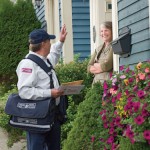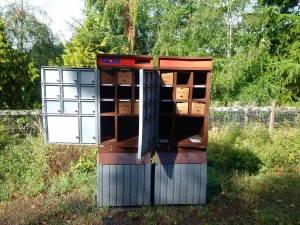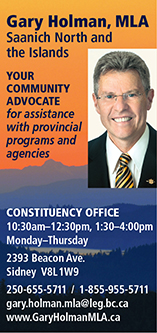Archive for September 2015
Saanich-Gulf Island All Candidates Debate
Saanich-Gulf Islands All Candidates Debate on September 19th in Brentwood Bay.
Alicia Cormier (NDP), Tim Kane (Liberal), and incumbent Elizabeth May (Green) outline their party’s platform and take questions from the audience.
Special thanks to Ratepayers and Residents of Central Saanich for hosting the debate and Ed Johnson for recording it.

TIME FOR A REAL CONVERSATION – Suggests civic educator Mona Brash to Central Saanich
by Sue Stroud
“The last amalgamation in BC was that of Abbotsford and Matsqui to form the City of Abbotsford in 1995,” explained civic educator Mona Brash speaking at the Residents and Ratepayers of Central Saanich Society (RRoCSS) meeting last spring. “Now, some in the newly-formed municipality are expressing concerns about unexpected social problems that arose because of that amalgmation.”
Brash explained that many problems arose from the increase in development that took place following Abbotsford’s amalgamation. The social problems included homelessness, caused by rapid growth and gentrification; and degradation of the area’s natural eco-systems: stream quality was affected, wildlife habitat threatened, tree retention lost.
Brash suggested that a great place to start when considering amalgamation is to consider what local government is, and what purpose it serves. She explained that it is often the civic level of government that is touted as the level of government closest and most directly impacting the daily lives of citizens. It is also the level at which c i t i z e n s have the most input into decision-making and can most easily hold politicians accountable.
Some of the questions that came up during discussion at Brash’s presentation included: “Would Central Saanich lose control over its farmland if it was amalgamated with North Saanich and Sidney? How many councillors would there be and from where? How would a change in councillor/citizen ratio impact local accountability and control? Would reducing 27 councillors to nine reduce local input? Who would such a change benefit?”
Some RRoCSS members expressed concern that it would be easier for developers to pressure councils if the councillors were from areas not impacted by the development. For example councillors from an urban area like Sidney might be less inclined to pay heed to concerns brought forward by citizens of rural Central Saanich where farmland preservation, stream protection and other issues are paramount. The loss of local councillors could equate to some loss of local autonomy and accountability.
Brash suggested that community organizations, like the Ratepayers, are wise to be out in front of the issue of amalgamation, so that special-interest groups from outside the community do not control the agenda. She noted that current BC legislation prohibits the provincial government from imposing amalgamation on local governments.
Brash concluded by suggesting to the Ratepayers that, “Your side on this issue is concerned with what happens to democracy and local control, the ‘yes’ emphasizes policing and other shared services and reduced costs.”
""
She added, “It’s time to make the ‘yes’ side provide fully documented local examples to prove their case.”
-30-

Saving Door-to-Door?
Community Mailboxes coming to Sidney this Fall.
by Roger Stonebanks, and Michele Murphy
Canada Post is expected to start installation shortly of community mailboxes in Sidney with full implementation in the fall for 3,300 addresses that now receive home delivery of mail. Affected residents in Sidney were advised of the change last May.
The news is contained in the minutes of the Sidney council meeting of July 13. The change is part of a nation-wide switch to community mailboxes.
Marnie Armstrong, director of municipal engagement for Canada Post, told Sidney council that the shift from paper to
digital correspondence means Canada Post must change the way it delivers mail. She said that two-thirds of Canadians now receive mail via community mailboxes.
But not everyone is happy with the change, nor do they agree that it is necessary.
A petition on Change.org is currently sitting with over 225,000 signatures, just 75,000 shy of its 300,000 goal. The petitioners claim that the impact on particular groups of Canadians hasn’t been properly considered, citing residents of areas with considerable snowfall, or sweltering heat, people with disabilities, and the elderly. The petition also cites the loss of a projected 8,000 jobs at the Crown Corporation, as well as neighbourhood degradation as reasons for reconsidering of the decision.

Residents in rural Saanich woke to find their community mailbox had been the target of another break-in. Photo courtesy Saanich South MLA Lana Popham.
Armstrong told SVO that Canadians are using the postal service much differently today – for example, mail volume has
dropped to 4.6 billion pieces in 2014 from six billion in 2006. Doorto-door delivery costs $289 per address compared with $111 for a community mailbox in 2014, she said.
But the Canadian Union of Postal Workers tells a different story. The union says that the financial situation of Canada Post
Corporation does not require such drastic service cutbacks. They claim that in the second quarter of 2014 the Canada Post Corporation reported $62 million in profit and has reported profits in 17 of the past 19 years.
While Sidney doesn’t suffer great snowfalls or sweltering heat, and is not home to a mail sorting plant and as such won’t suffer great job losses, it is home to a great many seniors. Most of the 11,000 plus people who live in Sidney are over 50 years old. In fact, the federal riding of Saanich-Gulf Islands is the third largest senior population in Canada and the highest median age.
What may be the most radical opposition to the mail delivery change came in August as Montreal Mayor Denis Coderre took a jackhammer to a newly poured community mailbox footing, a stunt that may see the mayor charged with a criminal offence. SVO has asked Sidney Mayor Price if he has plans to don a hard-hat and visi-vest in defence of his citizens’ rights to door mail delivery, but we have not heard back as yet.
Jonathon Dickie, in MP Elizabeth May’s office, said they received a flurry of feedback right after the initial announcement, “But constituents now seem resigned that there is little that can be done to reverse the decision until after the general election.”
The NDP, which is leading in the polls at the time of this posting, announced that, if elected, they will terminate Canada Post’s phase-out plan and restore service to those households that have already lost their home mail delivery.
-30-

Heaving Steve – But How?
Making big change takes more than just a ballot-box mark
by Michele Murphy
#HeaveSteve is a thing. Apparently a big thing. In an August online poll on Rabble.ca, more than 73% of respondents said that they would vote strategically in order to change government.
A quick Google search of the popular hashtag will turn up almost half a million hits – like the emerging Youtube sensation “Heave Steve – Prince Albert Riding 2015.” The little ditty’s second verse laments, “the glacier’s are melting, and there’s water on the run, we’re burning up the oil when we’ve got the wind and sun, and with Stevie at the helm, nothing’s being done!” While not on this year’s Billboard charts, it is gaining national attention after Council of Canadians chairperson Maude Barlow apparently encouraged members to show the video at each tour stop this election season, and it’s rocking #54 on the Top 50 Stephen Harper Protest Songs playlist (another thing).
Non-Conservative federal politics has long been heated in the south Vancouver Island region with New Democrats, Liberals and Greens battling it out for the anything but Conservative (ABC) vote. A quick glance through the #cdnpoli Twitter feed will see any number of discussions amongst progressives on Canada Pension Plan contributions, family law, caucus whipping, voting reform, senate abolition, and even the contentious Bill C-51, the Conservative’s anti-terror bill, (anti-democracy bill?). But in the big picture these could easily be considered nuances among progressive ideas. The one thing that all ABC voters can agree on is Stephen Harper must go.
But how does one effectively Heave Steve?
If polls are any indication of actual voter intention then the NDP’s Thomas Mulcair should be booking a truck for the move into Sussex Drive in October. ThreeHundredEight.com has both Randall Garrison and Elizabeth May back in Ottawa in time for the first snowfall. But polls are increasingly unreliable, and this election campaign is unprecedentedly long. A lot can happen in the days ahead, and the Conservatives have been thought to pull some very shifty tricks at the last minute (election eve calls from the “NDP” in 2009 that saw Liberal hopeful Briony Penn lose by less than the unrequited votes sent the NDP’s way).
Sadly, for the local voters who think Harper is past his expiry date, the election of two incumbent non-Conservative MPs won’t ensure Harper gets taken off the shelf. What can a Saanich and the Peninsula progressive do to make a difference in the big picture outcome besides making their mark on October 19th? What other agency do you have to make a difference? According to both Dogwood Initiative and Leadnow.ca, lots.
Both Dogwood and Leadnow are non-partisan progressive advocacy groups working towards change in Canada. Leadnow’s main focus is on democracy, climate change, and economic inequality; Dogwood’s is reclaiming decision-making power over air, land and water. Their tools: social media, telephones, doorbells, and people.
For the 2015 election Leadnow has created the Vote Together campaign asking people to take a pledge to vote and campaign strategically. The goal, campaign manager Amara Possian told the Huffington Post, is to defeat Conservative candidates by uniting centre-left voters around one candidate in selected ridings. Leadnow asks that voters not only mark their ballots strategically, but focus their donations and their volunteer time with the big-picture in mind. “Regardless of where you live, each and every one of us has a crucial role to play in the Vote Together campaign,” they write in a recent email to their list. The group has identified 72 Conservative swing ridings that they feel efforts to avoid vote-splitting will make a difference. And they are asking for all the help you can give – donations, phone callers, door-knockers directed to these specific swing ridings.
Likewise, Dogwood Initiative, based in Victoria, has done its own polling and analysis, and has teams on the ground ready to influence wherever they can around progressive change through the federal electoral process. And they are asking for support as well, through donations and volunteering in ridings that they feel will make the most difference.
Leadnow executive director Lyndsay Poaps told The Tyee this past August that, “In 2011 a majority of Canadians voted for change, but the non-Conservative vote was split. Sixty per cent of the electorate voted against Harper, but the Tory leader emerged with 100 per cent of the power in Ottawa.”
We’ll find out on October 19th if Heaving Steve was really a thing.
For more information:
Leadnow.ca
VoteTogether.ca
DogwoodInitiative.org
ThreeHundredEight.com
CBC Poll Tracker
Rabble Poll on Strategic Voting
13 Swing Riding Polls – Wave One
CUPE letter to LeadNow












